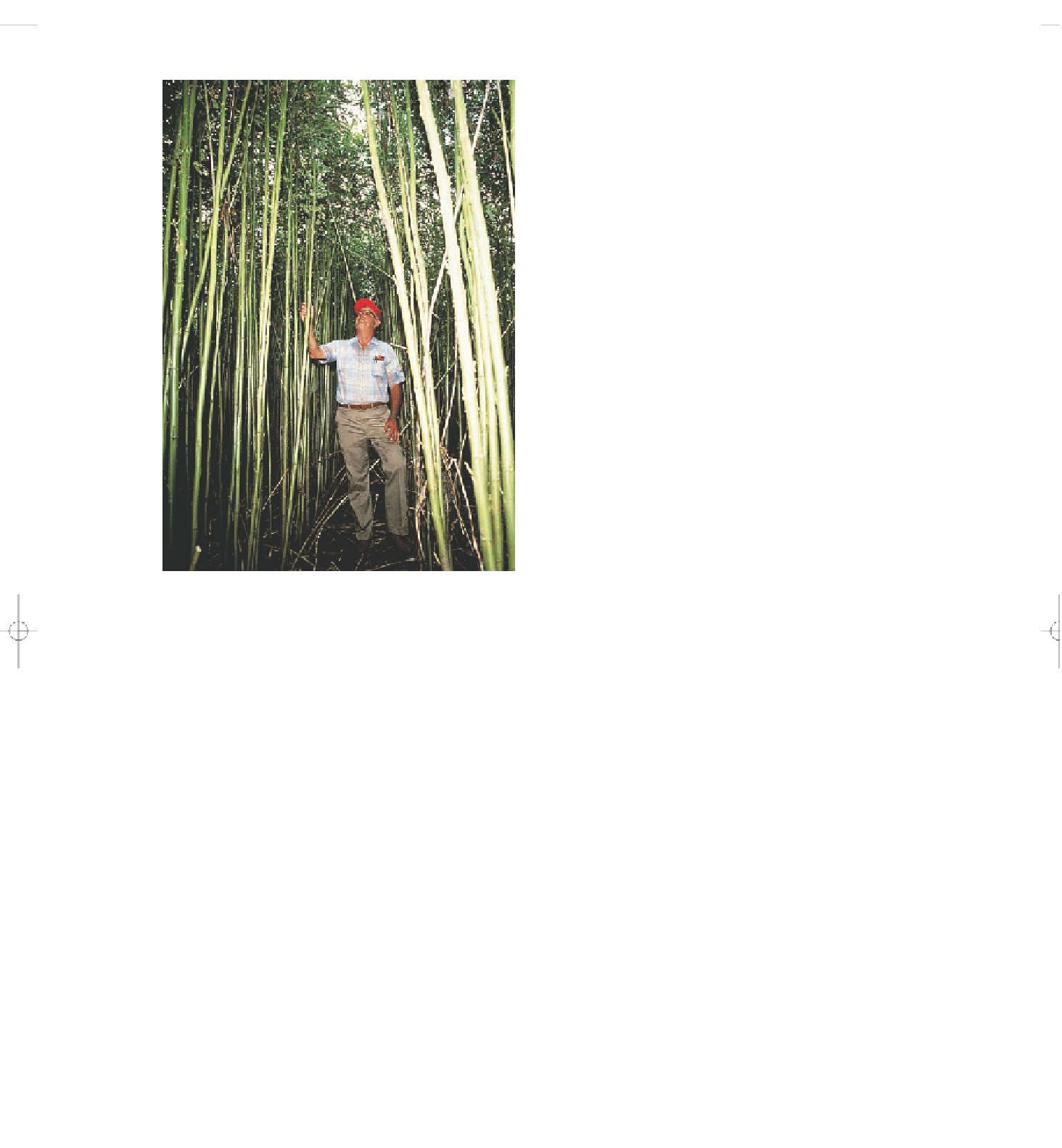Environmental Engineering Reference
In-Depth Information
forests once covered at least twice as much area as they
do today, with most of the destruction occurring since
1950. Satellite scans and ground-level surveys used to
estimate forest destruction indicate that large areas of
tropical forests are being cut rapidly in parts of South
America (especially Brazil), Africa, and Asia.
Studies indicate that at least half of the world's
species of terrestrial plants and animals live in tropical
rain forests (Figures 3-15, p. 46), 8-4, and 8-5. Because
of their specialized niches, these species are highly
vulnerable to extinction when their tropical forest
habitats are cleared or degraded. Brazil has about 40%
of the world's remaining tropical rain forest and an es-
timated 30% of the world's terrestrial plant and animal
species in the vast Amazon basin, which is about two-
thirds the size of the continental United States.
In 1970, deforestation affected only 1% of the area
of the Amazon basin. By 2005, an estimated 16-47%
had been deforested or degraded and converted
mostly to tropical grassland (savanna). Between 2002
and 2004, the rate of deforestation increased sharply—
mostly to make way for cattle ranching and large plan-
tations for growing crops such as soybeans used for
cattle feed. In 2004, loggers and farmers cleared and
burned (Figure 8-19, p. 170) an area of tropical forest
equivalent to a loss of 11 football fields a minute.
According to Pedro Dias and a number of other
tropical forest researchers, without immediate and ag-
gressive action to reduce current forest destruction
and degradation practices, at least a third and perhaps
as much as 60% of Brazil's original Amazon rain forest
will disappear and turn into tropical grassland some-
time during this century.
You probably have not heard about the loss of
most of Brazil's Atlantic coastal rain forest. This less fa-
mous forest once covered about 12% of Brazil's land
area. Now 93% of it has been cleared and most of what
is left is recovering from previous cutting episodes.
The result: a major loss of biodiversity because an area
in this forest a little larger than two typical suburban
house lots in the United States has 450 tree species!
The entire United States has only about 865 native tree
species.
Observers disagree about the how rapidly tropical
forests are being deforested and degraded for three
reasons.
First,
it is difficult to interpret satellite images.
Second,
some countries hide or exaggerate deforesta-
tion rates for political and economic reasons.
Third,
governments and international agencies define forest,
deforestation, and forest degradation in different
ways.
Because of these factors, estimates of global tropi-
cal forest loss vary from 50,000 square kilometers
(19,300 square miles) to 170,000 square kilome-
ters (65,600 square miles) per year. This rate is high
enough to lose or degrade half of the world's remain-
ing tropical forests in 35-117 years.
Figure 8-18
Solutions:
pressure to cut trees to make paper
could be greatly reduced by planting and harvesting a fast-
growing plant known as kenaf.
vate owners who can no longer make a profit by sell-
ing off some of their timber might be tempted to sell
their land to housing developers.
The lower income from harvesting trees also
means that both the government and private owners
will have less money and fewer incentives for manag-
ing forests, forest restoration, and forest thinning pro-
jects to reduce damage from fire and insects. As a re-
sult, stewardship of public and private forests in the
United States may decline unless the country over-
hauls its forest policy to meet this new reality and the
challenges it presents.
8-5
TROPICAL DEFORESTATION
Global Outlook: Clearing and Degradation of
Tropical Forests
Large areas of ecologically and economically
important tropical forests are being cleared and
degraded at a fast rate.
Tropical forests cover about 6% of the earth's land
area—roughly the area of the lower 48 U.S. states. Cli-
matic and biological data suggest that mature tropical

